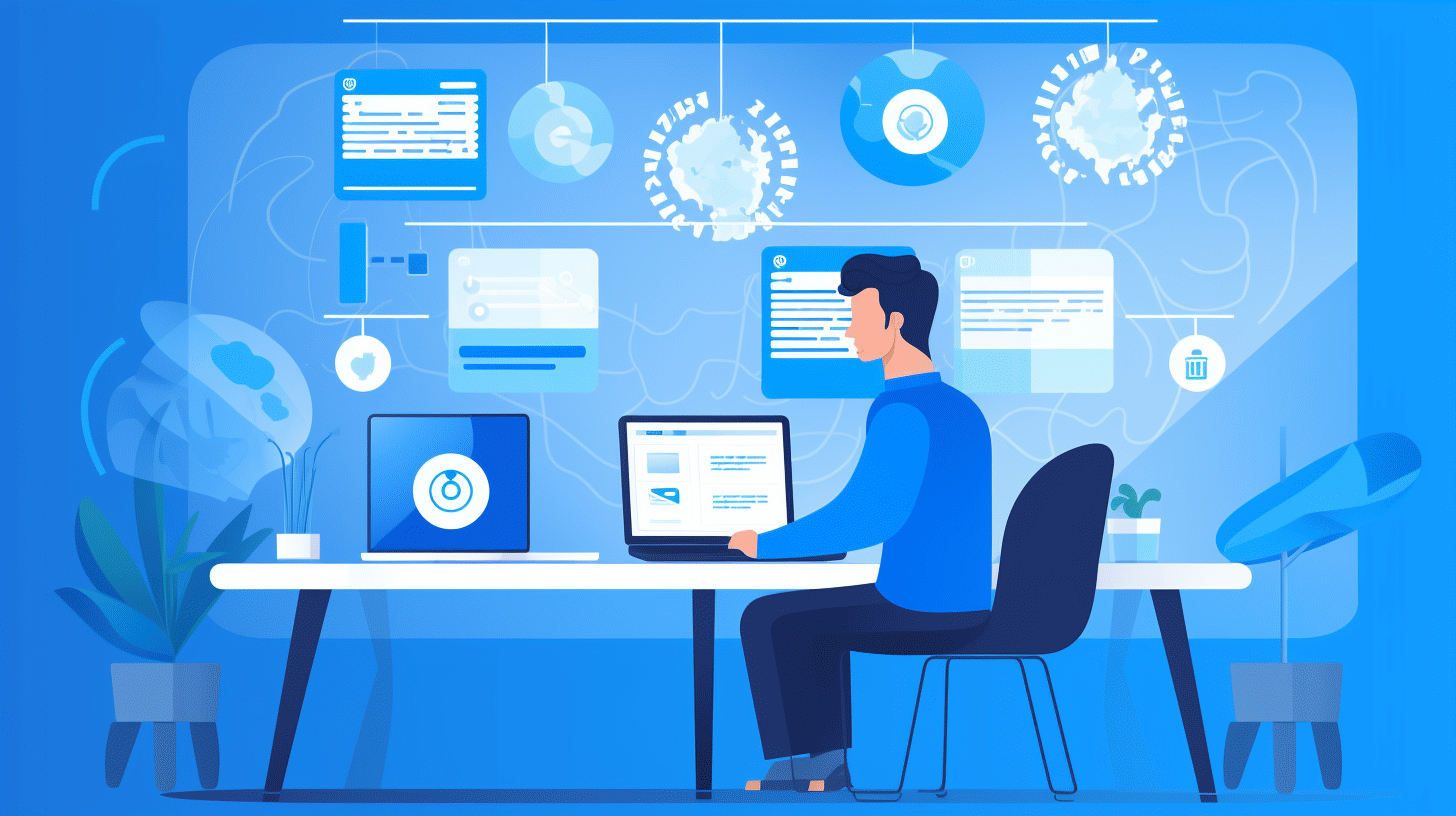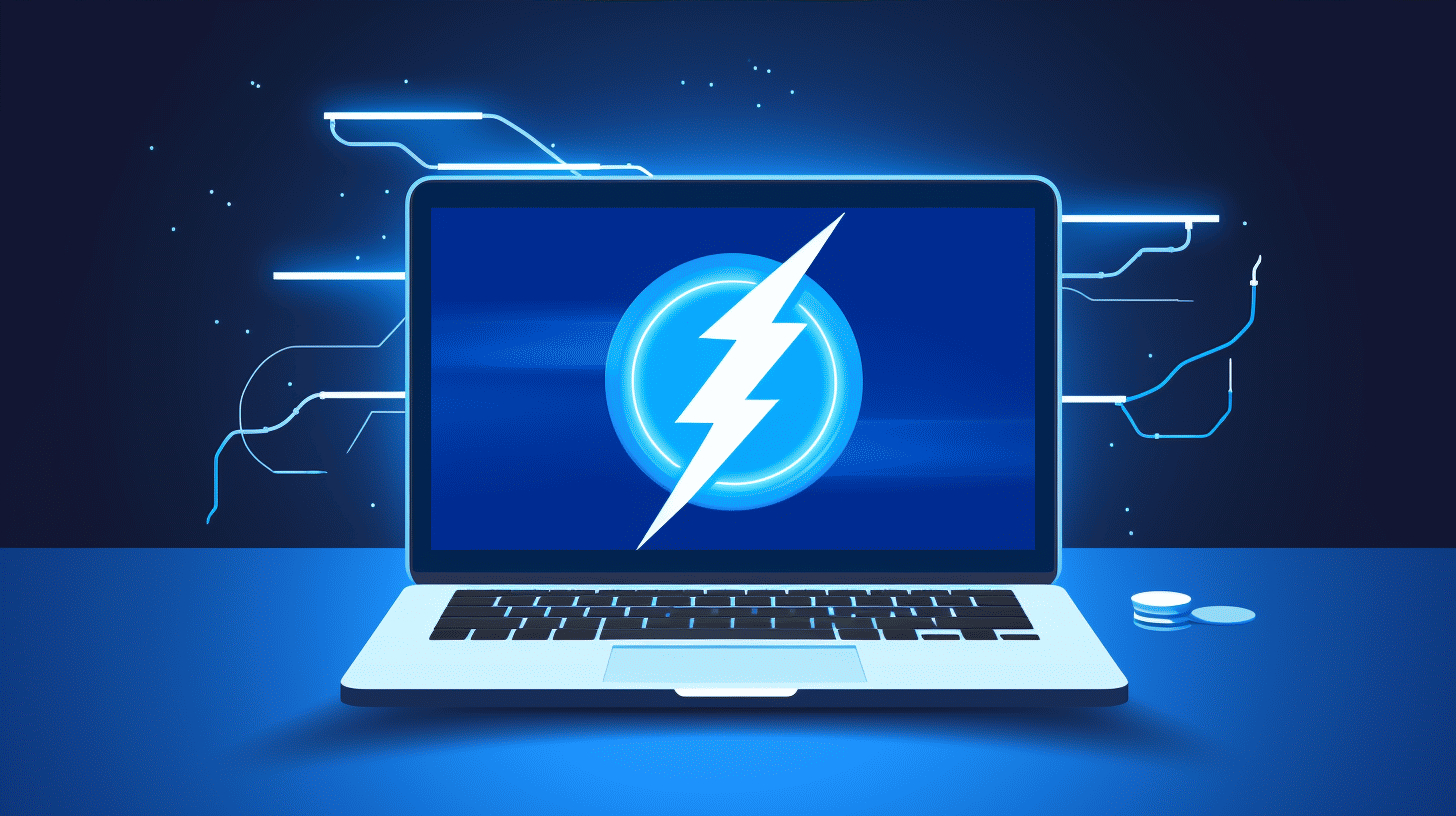管理多個 WordPress 網站可能是一項艱鉅的任務。從跟上更新和安全措施到確保高效的工作流程和最大限度地減少停機時間,有許多挑戰需要克服。然而,如果採用正確的策略和最佳實踐,管理多個 WordPress 網站可以成為一個簡化且高效的過程。
在本文中,我們將探討管理多個 WordPress 網站以確保安全性和效率的最佳實踐。從標準化外掛程式和主題到利用 WordPress 管理工具和整合託管,我們將介紹一系列策略來幫助您有效地管理您的網站。
無論您是網頁設計師、開發人員還是擁有多個 WordPress 網站的企業主,這些最佳實踐都將幫助您在網站管理任務中保持井然有序、安全和高效。那麼讓我們深入研究如何有效管理多個 WordPress 網站!
管理多個 WordPress 網站的最佳實踐
管理多個 WordPress 網站可能是一項艱鉅的任務,但只要採取正確的策略,您就可以簡化工作流程並確保所有網站的一致性。在本文中,我們將探討一些最佳實踐,以幫助您有效管理多個 WordPress 網站。
標準化外掛和主題
管理多個 WordPress 網站的關鍵挑戰之一是保持所有網站的一致性。在每個網站上單獨手動更新外掛程式和主題可能非常耗時,而且容易出錯。為了克服這項挑戰,必須對所有網站使用的外掛程式和主題進行標準化。
透過標準化外掛程式和主題,您可以:
- 確保所有站點的功能和設計一致。
- 透過在一個地方更新外掛和主題來簡化維護過程。
- 降低不同版本外掛和主題之間相容性問題的風險。
例如,您可以建立符合您要求的已核准外掛程式和主題列表,並將其安裝在您的所有網站上。這樣,您可以輕鬆管理更新並確保所有網站都使用最新版本。
使用 WordPress 管理工具
為了有效管理多個 WordPress 網站,利用 WordPress 管理工具可以改變遊戲規則。這些工具提供了一個集中平台,可從一個儀表板監控和控制您的所有網站。以下是一些流行的WordPress管理工具:
- MainWP:提供使用者友善的介面來管理多個網站。
- InfiniteWP:允許您透過點擊更新所有網站上的外掛程式、主題和 WordPress 核心。
- CMS Commander:提供一套全面的工具來管理多個 WordPress 網站,包括備份、安全性和內容管理。
- ManageWP:讓您從一個地方管理和更新多個 WordPress 網站,以及網站正常運行時間監控和效能優化等附加功能。
- WPRemote:提供一個簡單的介面,用於管理多個 WordPress 網站的更新、備份和安全性設定。
這些工具可以自動執行多項任務,節省您的時間和精力,同時確保您的網站是最新的。
透過整合託管簡化工作流程
當託管整合後,管理多個 WordPress 網站會變得更有效率。整合託管意味著將您的所有網站託管在單一平台或伺服器上。這種方法有幾個好處:
- 簡化了管理流程並減少了在不同託管服務提供者之間切換的需要。
- 提供更好的控制和更輕鬆的訪問您的所有網站。
- 透過利用批量定價和共享資源來降低成本。
整合託管可以透過以下方式實現:
- 選擇提供可擴展且靈活的託管計劃以容納多個網站的網站託管商。
- 將您的所有網站遷移到單一託管服務提供者並優化 WordPress 的伺服器環境。
透過整合託管,您可以簡化工作流程,並將更多精力放在管理和優化您的網站,而不是處理多個託管平台。
總之,管理多個 WordPress 網站需要仔細規劃並採用正確的工具。透過標準化外掛程式和主題、使用 WordPress 管理工具以及整合託管,您可以有效率地管理所有網站,同時確保一致性並簡化工作流程。
有關簡化 WordPress 開發工作流程的更多見解,您可以訪問 此連結.
WordPress 網站的安全措施
WordPress 是世界上最受歡迎的內容管理系統之一,為數百萬個網站提供支援。然而,它的受歡迎程度也使其成為惡意行為者利用漏洞並獲得未經授權存取的目標。作為網站所有者,實施強大的安全措施來保護您的 WordPress 網站及其寶貴資料至關重要。
在本文中,我們將探討一些可以幫助保護您的 WordPress 網站免受威脅的基本安全措施。透過遵循這些預防措施,您可以增強網站的安全性並確保訪客資訊的安全。
密碼管理和身份驗證
任何網站(包括 WordPress)的基本安全措施之一就是有效的密碼管理。以下是一些提高密碼安全性的技巧:
- 使用強大而獨特的密碼:避免使用常見或容易猜測的密碼。大寫和小寫字母、數字和符號的組合可構成強密碼。
- 限制登入嘗試次數:實施登入嘗試次數限制可以防止暴力攻擊,駭客會嘗試多種登入組合來取得存取權限。經過一定次數的失敗嘗試後,使用者將被暫時鎖定。
🔐 專業提示:要管理和實施強密碼策略,請考慮使用密碼管理工具或插件,例如 有效的 WordPress 網站管理。它可以幫助您產生強密碼、安全地儲存密碼並簡化使用者的登入流程。
SSL 憑證的實施
確保您的網站與其用戶之間的通訊安全至關重要。透過實作 SSL(安全通訊端層)證書,您可以確保您的網站和訪客之間傳輸的資料是加密且受保護的。 SSL 憑證至關重要的原因如下:
- 資料加密:SSL 憑證可對敏感資訊(例如登入憑證和個人資料)進行加密,以防止未經授權的存取。
- 信任與可信度:SSL 憑證向您的訪客表明您優先考慮他們的安全,從而增強他們對您網站的信心。
- SEO 優勢:Google 等搜尋引擎優先考慮具有 SSL 憑證的網站,這可以使網站在搜尋結果中排名更高。
🔒 有趣的事實:您是否知道具有 SSL 憑證的網站會在網址列中顯示掛鎖圖標,表示安全連線?使用者更有可能信任並參與具有這種視覺安全確認的網站。
使用 WordPress 安全性插件
WordPress 安全性外掛程式是強大的工具,可以幫助保護您的網站免受各種威脅和漏洞的侵害。這些插件提供惡意軟體掃描、防火牆保護和登入鎖定等功能。以下是一些值得考慮的流行 WordPress 安全性外掛:
- Wordfence Security:一個全面的安全插件,包括防火牆、惡意軟體掃描程式和登入保護。
- Sucuri Security:提供網站監控、惡意軟體掃描和 DDoS 保護等功能。
- iThemes Security:提供暴力破解保護、檔案變更偵測和資料庫備份。
🛡️ 專業提示:請記得定期更新您的安全插件,以確保您擁有最新的防護措施以抵禦新興威脅。
主題、外掛程式和 WordPress 核心檔案的定期更新
保持 WordPress 安裝為最新版本對於維護網站安全至關重要。 WordPress 定期發布更新,包括錯誤修復、安全性修補程式和效能增強。同樣,更新主題和外掛也同樣重要。未能更新可能會導致您的網站容易受到試圖利用已知漏洞的駭客的攻擊。
🔄 有趣的事實:您是否知道 74% 的 WordPress 攻擊都是由於外掛程式和主題版本過時造成的?透過保持警惕並及時更新,您可以顯著降低安全漏洞的風險。
實施強大的安全策略對於保護您的 WordPress 網站及其保存的寶貴資料至關重要。透過遵循這些安全措施,包括強密碼管理、SSL 憑證、安全性外掛程式和定期更新,您可以顯著降低惡意攻擊的風險並確保您的網站及其訪客的安全。
請記住,有效的 WordPress 網站管理不僅僅是創建出色的內容和設計;它還涉及優先考慮安全性,以便為您的用戶提供安全的體驗。
立即保護您的 WordPress 網站並確保您高枕無憂!
災難復原和最小化停機時間
想像一下這種情況:您已經在 WordPress 網站上辛勤工作了好幾個月,傾注了全部心血來打造引人入勝的內容、完善設計並吸引忠實的追隨者。這是您的數字寶貝,您想保護它免受任何可能造成的傷害。不幸的是,災難隨時可能發生,無論是硬體故障、網路攻擊,甚至是簡單的人為錯誤。這就是災難復原和最小化停機時間發揮作用的地方。
當涉及災難復原和最大限度地減少 WordPress 網站的停機時間時,您必須採取的關鍵步驟是定期備份您的網站。定期備份為您提供了安全網,使您能夠在出現問題時將網站還原到先前的工作狀態。讓我們面對現實吧——有些事情在某個時候不可避免地會出錯。
當您定期備份 WordPress 網站時,您可以確保擁有網站檔案和資料庫的乾淨、最新副本。此備份可作為您的後備計劃和保險單,確保您的辛勤工作和寶貴資料受到保護。那麼,如何以高效且輕鬆的方式備份您的 WordPress 網站呢?
以下是一些可幫助您入門的提示:
- 自動化流程: 手動備份非常耗時,而且容易出現人為錯誤。選擇可靠的 WordPress 管理服務,例如 Managed-WP,其功能之一就是提供自動備份。它消除了過程中的麻煩並確保您的網站定期備份,而無需您移動一根手指。
- 選擇正確的備份頻率: 備份的頻率取決於您更新網站的頻率。如果您每天都進行更改,那麼最好選擇每日備份計劃。但是,如果您不經常更新網站,每週或每月備份一次就足夠了。評估您的網站的需求並選擇與您的更新計劃相符的備份頻率。
- 安全儲存備份: 您的備份的品質取決於其儲存位置。選擇安全可靠的備份儲存解決方案至關重要。考慮使用異地儲存選項,例如雲端儲存或外部硬碟。這確保即使您的網站伺服器受到威脅,您仍然可以存取您的備份。
請記住,災難復原和最小化停機時間是相輔相成的。透過定期備份您的 WordPress 網站,您可以在發生任何不可預見的事件時快速有效地恢復。立即採取必要的措施來保護您的網站並保護您的辛勤工作成果。不要等到為時已晚!
因此,無論您是經驗豐富的網站所有者還是剛起步,都不要低估定期備份對於災難復原和最大限度減少停機時間的重要性。今天就將其作為您的 WordPress 網站的優先事項,並且放心,因為您已經做好了應對可能遇到的任何障礙的準備。
要了解有關 Managed-WP 提供的功能以及它如何幫助進行災難恢復和最大限度地減少停機時間的更多信息,請查看 託管WP功能 頁。
造訪並管理多個 WordPress 網站
您是否厭倦了為了管理 WordPress 網站而處理多個登入資訊和儀表板?嗯,你真幸運!有強大的工具可供您從一個集中平台存取和管理多個 WordPress 網站,讓您的生活更輕鬆。告別在不同站點之間切換的麻煩,使用這些方便的工具簡化您的工作流程。
利用多站點管理工具
ManageWP 是管理多個 WordPress 網站的最受歡迎和最可靠的工具之一。這個強大的多站點管理工具可讓您從一個方便的儀表板處理所有 WordPress 網站。使用ManageWP,您可以:
- 高效率管理多個站點:ManageWP 允許您從單一介面存取所有網站,而不必單獨登入每個網站。您可以同時對多個網站執行更新、備份和其他管理任務。
- 監控站點效能:使用 ManageWP,您可以輕鬆關注所有 WordPress 網站的表現。取得網站正常運作時間、載入時間和其他關鍵指標的即時數據,以確保您的網站順利運作。
- 自動執行日常任務:使用 ManageWP 自動執行日常任務,節省時間。安排備份、更新和安全性掃描,這樣您就可以專注於業務中更重要的方面。
- 增強安全性:使用 ManageWP 的內建安全功能維護您的 WordPress 網站的安全。您可以執行安全掃描,監控漏洞,甚至實施雙重認證以增強保護。
ManageWP 不是管理多個 WordPress 網站的唯一選項。另一個流行的工具是 InfiniteWP。它提供類似的功能和功能,可讓您從單一儀表板管理無限數量的 WordPress 網站。
使用這些強大的多網站管理工具來控制您的 WordPress 網站並簡化您的工作流程。憑藉其用戶友好的介面和強大的功能,您會驚訝地發現如果沒有它們您將如何生活。那麼,為什麼要等待呢? 試試 ManageWP 或 InfiniteWP,立即體驗集中式 WordPress 網站管理的便利性!
結論
總之,管理多個 WordPress 網站需要仔細注意安全性和效率的最佳實踐。透過標準化外掛程式和主題、使用 WordPress 管理工具以及透過整合託管簡化工作流程,網站所有者可以確保其網站的順暢運作和一致的效能。
密碼管理和身份驗證、實施 SSL 憑證以及使用 WordPress 安全性外掛程式等安全措施對於保護網站免受潛在威脅至關重要。定期更新主題、外掛程式和 WordPress 核心檔案對於優化安全性和保護網站也至關重要。
當涉及災難復原和最大限度地減少停機時間時,定期備份 WordPress 網站至關重要。這些備份充當了安全網,允許網站所有者在發生任何資料遺失或網站故障時快速恢復他們的網站。
為了有效存取和管理多個 WordPress 站點,使用多站點管理工具可以大大簡化流程。這些工具提供了一個用於管理所有網站的集中儀表板,使網站所有者可以節省處理各種任務的時間和精力。
總而言之,遵循這些管理多個 WordPress 網站的最佳實踐可以幫助確保您的線上業務的安全、高效和順暢運行。考慮利用 Managed-WP,這是一個高級託管 WordPress 雲端託管平台,可簡化基礎架構並提供專家全天候問題解決方案。透過 Managed-WP,您可以專注於推動數位體驗,同時將技術問題交給有能力的人。了解有關 Managed-WP 的更多信息 在这里,.
常見問題解答
- 管理多個 WordPress 網站的最佳做法是什麼?
管理多個 WordPress 網站的一些最佳實踐包括使用集中管理工具、保持主題和外掛程式為最新、使用強大而獨特的密碼、定期備份您的網站以及實施可靠的安全性外掛程式。
- 我是否應該使用一個集中管理工具來管理多個 WordPress 網站?
是的,使用像 ManageWP、InfiniteWP 或 MainWP 這樣的集中管理工具可以大幅簡化管理多個 WordPress 網站的過程。這些工具可讓您從單一儀表板更新外掛程式、主題和 WordPress 核心並提供其他有用的功能。
- 保持主題和外掛更新有多重要?
保持主題和外掛程式更新對於 WordPress 網站的安全性和效能至關重要。過時的主題和外掛程式可能存在駭客可利用的漏洞。定期更新可確保您擁有最新的功能、錯誤修復和安全性修補程式。
- 為什麼對每個網站使用強而獨特的密碼很重要?
為每個網站使用強大且獨特的密碼對於防止未經授權的存取非常重要。如果一個網站受到攻擊,每個網站設定唯一的密碼可確保其他網站的安全。 LastPass 和 Dashlane 等密碼管理器可以協助產生和儲存強密碼。
- 我應該多久備份一次我的 WordPress 網站?
建議定期備份您的 WordPress 網站,最好每天或每週備份一次。這可確保在發生任何資料遺失或網站問題時您擁有網站的最新副本。 UpdraftPlus 和 VaultPress 等備份外掛程式可以自動執行備份程序。



















